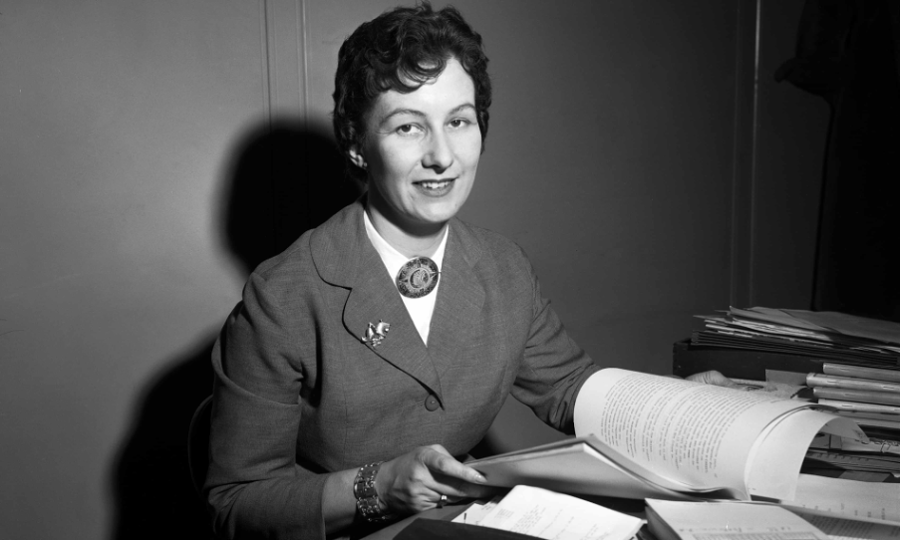The Cambridge Centre for Applied Research in Human Trafficking (CCARHT) is excited to host our 8th Annual Symposium, covering neglected areas of attention in the struggle to address in a sustainable manner the challenges of Human Trafficking in our time. This year’s symposium themes of “Land, Widows and Wombs: A Gendered Assets Approach to ‘Enabling Environments’ of Human Trafficking and Exploitation” opens up a wonderful opportunity to collaborate with the Margaret Anstee Centre for Global Studies, which is hosted by Newnham College and honours the groundbreaking work of Dame Margaret Joan Anstee.
Dame Margaret Joan Anstee was as many here already know, a pioneering figure at the United Nations, breaking barriers when she became first woman to hold the rank of Under-Secretary-General in 1987. As Director-General of the UN Office in Vienna, she led global initiatives in social development, humanitarian affairs, crime prevention, and narcotics control, setting a powerful precedent for women in international diplomacy. This work would later develop into the UNODC which has taken forward the brief for holding nations to account with the breakthrough supplementary Palermo Protocols of 2000, which outlined the offence of Human Trafficking for the third millennium and the requirements on signatory nations to attend to the 4 Ps of Human Trafficking, alongside addressing in other supplementaries, clarity around the definition of smuggling of persons, and fresh approaches to the smuggling/ trafficking of drugs and armaments.
Dame Anstee’s groundbreaking work continued with her appointment as the Secretary-General’s Special Representative to Angola in 1992, making her the first woman to lead a UN military peacekeeping mission. Tasked with overseeing Angola’s fragile peace process during its first multiparty elections, she demonstrated resilience and commitment in trying to prevent the nation’s descent back into civil war.
Bolivia held a special significance for Dame Anstee, where she served as an adviser to multiple Presidents and made her home on Lake Titicaca. Her deep connection to the country and her contributions to its development solidified her legacy as a trusted expert and advocate in the region.
Following her retirement in 1993, Dame Anstee remained active as an adviser to the UN on political and peacekeeping operations, while also training future peacekeepers and writing extensively. Her autobiography, Never Learn to Type, offers a captivating look into her career and the obstacles she overcame as a woman navigating the complexities of global diplomacy.
Dame Anstee’s achievements were widely recognised, including a Damehood from Queen Elizabeth II in 1994 and honours from Austria, Bolivia, and Morocco. She also received honorary degrees from several universities, including Cambridge. Her life and career exemplify determined leadership and the relentless pursuit of breaking barriers for women in global governance.
Dame Margaret Joan Anstee’s legacy as a trailblazer in international development and humanitarian work continues to inspire, making her a wonderful ‘virtual patron’ for this year’s Cambridge Centre for Applied Research in Human Trafficking (CCARHT) symposium theme. Her pioneering leadership in gender-sensitive initiatives, social development, crime prevention, and peacekeeping, resonates deeply with the themes of this year’s symposium, “Land, Widows and Wombs.”
We are delighted to be aligned this year, in the hosting of the symposium in the Barbara White Rooms of Newnham College, with Dame Anstee’s commitment to addressing systemic inequalities, particularly those faced by women in conflict zones and marginalised communities, aligns with the symposium’s focus on the intersection of gender, land rights, widowhood, and reproductive health. Her example of defying expectations in patriarchally dominated spaces, highlights the crucial role of gender equality in achieving social justice, making her an enduring influence on global conversations around human rights and the empowerment of women.

To read more of Dame Margaret Anstee’s life and work follow here
To read more of the current work of the Margaret Anstee Centre follow here
See you at this years symposium!
